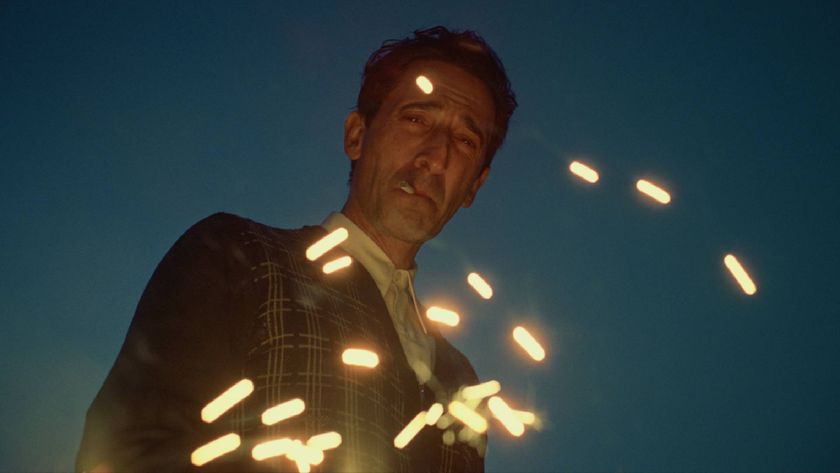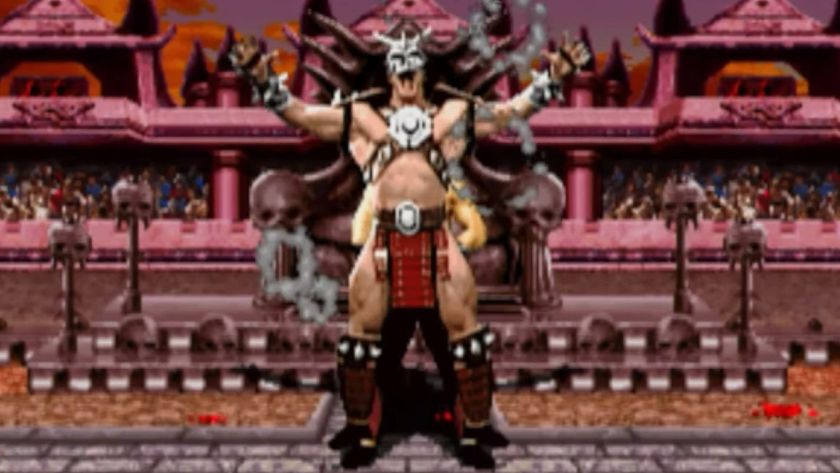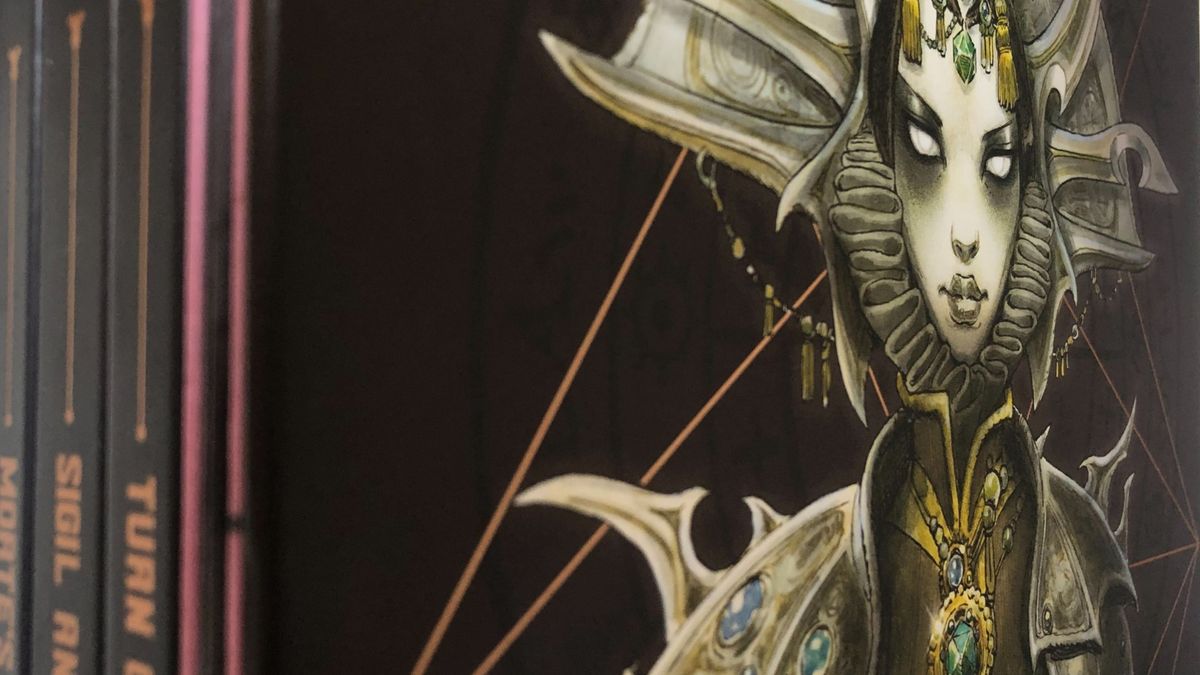12DOVE Verdict
Planescape: Adventures in the Multiverse is vibrant and colourful, but patchy. It can also feel rushed, with so much more that clearly needs to be covered. While Turn of Wheel's Fortune is a fun romp stuffed with colorful ideas, I don't feel like the setting book does much justice to the (still phenomenal) realm of Sigil, as Wizards of the Coast still seems yet to realise that vagueness is not a strength, but a weakness.
Pros
- +
Turn of Wheel's Fortune has many fun setpieces, characters, and locations
- +
Great artwork helps bring the world to life where the writing struggles
- +
Planescape and Sigil remains one of D&D's most captivating settings
Cons
- -
Thin descriptions and strange omissions leave obvious and frustrating gaps
- -
The new monster manual is a bit of an unfocused grab-bag
Why you can trust 12DOVE
Before Planescape: Adventures in the Multiverse was announced for the latest edition of D&D, it was more a matter of 'when' than 'if.' That's because the setting's city of Sigil has always had an arresting premise, and remains a cult classic amongst fans of the best tabletop RPGs. It's the crossroads of the multiverse! A surreal metropolis outside of reality, where mortals and immortals from across the planes gather in a melting pot of cultures the likes of which cannot be imagined! Witness the curling Cage before you, radiant with interdimensional portals to everywhere and anywhere, all potential pathways for heroes, villains, gods, monsters, and everything in between! Cower at the mere sight of the enigmatic, omnipotent ruler known only as the Lady of Pain, and her army of emoji-loving Dr. Seuss characters!
Now all that remains is for this new three-volume collection to stick the landing and do justice to this brilliant concept. With one book for the setting, one for new creature stat blocks, and a medium-sized cosmic adventure (Turn of Fortune's Wheel) for players between levels 3-17 (it's shorter than it sounds), not to mention a new DM screen, there's theoretically everything you'd ever need here. Er, not including the Dungeons & Dragons 5e Monster Manual, Player's Handbook, and Dungeon Master's Guide. You know how it goes.
Planescape: Adventures in the Multiverse - features & design



- Brings back a classic setting
- Made up of three books
- Vibrant, imaginative artwork
Planescape: Adventures in the Multiverse is a supplementary collection for D&D 5e that includes a new Dungeon Master's Screen and three books, each serving their own function. 'Sigil and the Outlands' details the setting and has a couple of appropriate new player character backgrounds, 'Morte's Planar Parade' holds all the new monsters you can expect to find in and around Sigil, and 'Turn of Fortune's Wheel' is a 96-page adventure that takes characters through the whole realm and even in brief jaunts into other planes altogether.

System: D&D Fifth Edition
Players: 2 - 6
Lasts: 3-4 hours per session
Play if you like: Spelljammer, Baldur's Gate, Planescape: Torment
Speaking of, the latter module concerns the players mysteriously returning to life in Sigil's morgue, exploring the Outlands to regain their lost memories, and uncovering a strange new threat along the way, as the multiverse itself is beginning to glitch strangely - including creating alternate-reality versions of our central cast. Multiverses really are in fashion, it seems.
At least the journey will be a visual treat. Much like Spelljammer: Adventures in Space, this version of Planescape is home to some excellent - if weird - visuals. The artwork in all three books is pretty great, and particularly pops in the pages of Planar Parade. When it comes to the visuals, I simply have no notes - carry on the stellar work, artists.
Planescape: Adventures in the Multiverse - gameplay


- Adventure book is the best of the three
- Monster book is chaotic but great
- Leaves far too much to the imagination
Let's get this out of the way first: I found the setting book, Sigil and the Outlands, disappointing. It feels less like a comprehensive introduction to the City of Doors and surrounding regions, and more like a series of selective tidbits covering whatever the writers felt was most interesting at the moment, not helped by the occasional poor phrasing or threadbare explanation. Consequently, I can name quite a few luscious locations, kooky characters, and fun threats that heroes might encounter in Sigil, yet I'm left strangely uncertain about how the city actually functions on a larger scale, whether cosmically, magically, or politically, with sections that simply wouldn't make sense or come across clearly unless you had prior knowledge to fall back on and fill the gaps. The same problem continues once you get to the surrounding Outlands and towns within - with so much to cover, dealing with it all in 96 pages was clearly too ambitious.
Still, what ideas we get are as charming now as they were when formulated decades ago, if treated more lightly than in the past. Sigil as portrayed here is a quirky, eclectic metropolis, somewhere between Discworld's Ankh-Morpork and Knowhere from Guardians of the Galaxy. The Lady of Pain is still one of the coolest characters in D&D mythology, and there's an overall emphasis on defying expectations - this is a realm where demons can be forgiving, where angels can be apathetic, and where mortals are developing new philosophies and beliefs in response to seeing the arbiters of the cosmos in such an unimpressive context. Hence the various new factions, ranging from necromancers to atheists to bakers, who run the city's districts. They're a nice shot of flavour, though perhaps a bit overemphasised, considering most parties will probably be more interested in the weirder elements of the city than its various clubs of self-righteous humanoid philosophers.
I found myself getting frustrated by 5e's now-characteristic vagueness
And those weirder elements are where the Monster Manual supplement, Morte's Planar Parade, steps up to the plate. There's a lot of variety here that borders on unfocused, though that might be unavoidable considering that Sigil is supposed to have a bit of everything within its borders. Consequently, Morte's book feels like it's simply here to fill in some long-running gaps in D&D's Monster Manual, adding new Modrons and Celestials, plus the borderline godly 'Time Dragon' - because there are never enough dragons for WotC's liking, apparently.
Back on the ground, the Outlands that surround Sigil are also conceptually great - a wild mix of environments and a network of diverse towns, each settlement built around a portal to a new realm - but again, I found myself getting frustrated by 5e's now-characteristic vagueness, which hand-waves far too much for my liking. For example, while there's a pull-out map for both Sigil and the Outlands, both are wholly symbolic, with all the distances, dimensions and layouts stated as being "up to the DM to decide." Anything could be anywhere and any distance from anything else.


So it's up to me, huh? Call me lazy, but when I buy a setting book, I do find myself hoping that Wizards of the Coast will decide important facts about the setting - like its size and shape - for me. This has happened more than once recently in D&D modules, and it gets more annoying each time. Remember how cool it was when Tomb of Annihilation and Icewind Dale laid out clear distances and provided to-scale maps that players could use to plan the routes of their adventures, making them feel like bona fide explorers? The concept of Planescape is still fantastic, but I wish these books wanted to explore it as much as I did. The lack of detail is less egregious here than it was in Spelljammer (a module that in hindsight I wish I'd been less kind to), but it's still a problem. In many ways, it's the problem - a setting supplement that's inexplicably rushing the details on its setting.
Finally, there's Turn of Wheel's Fortune, a module that takes players from levels 3-10, before suddenly yanking them forward as a result of plot reasons to level 17 for the epic finale. Despite my issues with this product, I'll admit right now that I rather like ToWF - and I'll say the best material in all three books is found here. Even if the overarching plot is rather flimsy, it's full of great moments and locations that will make any party delighted simply by hearing the idea. Playing in a game of baseball between angels and demons? Hell yes. A magical casino where godhood is the grand prize? Hell yes! A giant walking castle that functions as the party's mobile base? Hell yes! It's so captivating, I almost didn't notice that the module spends very little time letting the players freely explore Sigil itself - perhaps a tacit admission that this element is weaker than it should've been.
Should you buy Planescape: Adventures in the Multiverse?

Hmm… Well now, that's the platinum piece question, isn't it? I'd call this one a "soft recommend," mainly based on how much you, as the Dungeon Master, are willing to work around the collection's flaws (likely by patching in mechanics and specific information to fill in the obvious and occasionally baffling gaps).
The vibe and tone of Planescape remain as spellbinding as ever - but when it's not relying on Turn of Wheel's Fortune to carry you through it, Adventures in the Multiverse struggles to translate that feeling into hard data and playable experiences. If you're not able, willing, or confident in meeting it more than halfway, or just understandably feel like you shouldn't have to do all that work yourself, this might not be for you.
Buy it if...
You're willing to add your own details to fill out the experience
Occasionally shallow or omitting certain elements, Planescape's setting is still glorious, but occasionally struggles to make the transition to the page. If you're a hard-working DM willing to carry it for that final distance, you can definitely give it the glow it deserves.
You want colourful, quirky, and comedic qualities.
While still perilous, Planescape is out to be flashy and fun, with many "monstrous" creatures recontextualised into oddball citizens. If you're more interested in seeing a Mind Flayer commandeering a restaurant than a Nautiloid, this will happily provide that unpredictable element.
Don't buy it if...
You're interested in character-focused experiences
The 'amnesia' angle in Turn of Wheel's Fortune, not to mention the risk that players could get replaced by parallel versions of themselves at any moment, can't help but play against deeper exploration of characters and backstory, though I suppose it's still theoretically possible if handled right.
You want something you can immediately run without preparation
Planescape's threadbare nature means that you probably won't be able to immediately answer half the questions your players have, and you'll need to make your own maps a lot of the time, both for larger cities and battlemaps for encounters.
How we tested Planescape: Adventures in the Multiverse
This product was read through and reviewed by a DM with over ten years of experience, who ran a session for friends using the setting, mechanics and creatures outlined in Sigil and the Outlands and Morte's Planar Parade. Without the time to run the adventure module Turn of Wheel's Fortune in its entirety, we can only speak to its qualities as readers, not players.
For more on our process, see our guide to how we test.
Disclaimer
This review copy was provided by the publisher.
More info
| Genre | RPG |

Joel Franey is a writer, journalist, podcaster and raconteur with a Masters from Sussex University, none of which has actually equipped him for anything in real life. As a result he chooses to spend most of his time playing video games, reading old books and ingesting chemically-risky levels of caffeine. He is a firm believer that the vast majority of games would be improved by adding a grappling hook, and if they already have one, they should probably add another just to be safe. You can find old work of his at USgamer, Gfinity, Eurogamer and more besides.

Oscars 2025 live coverage: All the winners, red carpet, and the 97th Academy Awards' biggest moments – as it happens

After 32 years, Mortal Kombat 2 has finally been ported to the one hyper-expensive '90s console that could actually do it justice

Ultima Online lead says "Animal Crossing and Stardew Valley and all these other kind of cozy games" are filling a gap in modern MMO design
Most Popular



